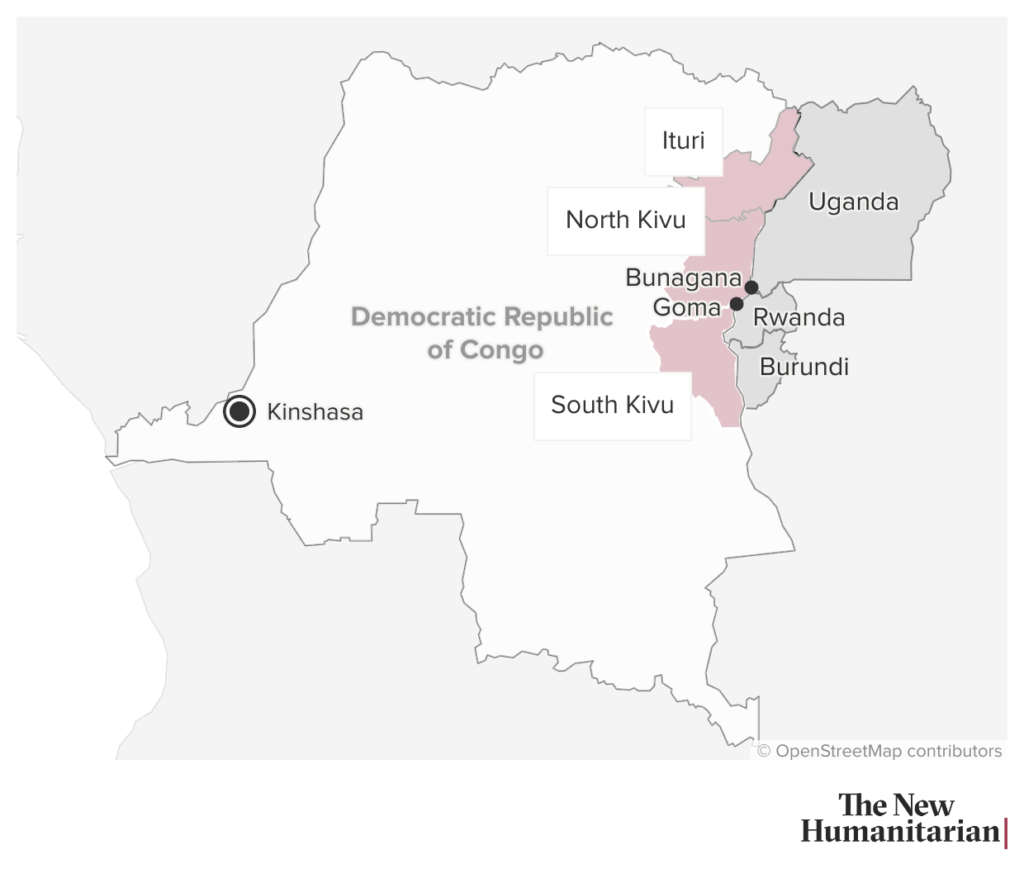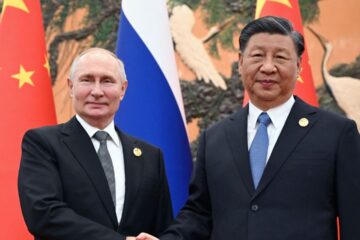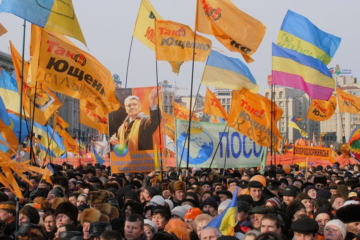THE DEMOCRATIC REPUBLIC OF CONGO: the resource curse
Despite its many natural resources, the DRC is one of the poorest countries in the world (184th GDP per capita out of 193 countries). That’s what we call the resource curse aka poverty paradox or paradox of plenty.
The DRC became independent from Belgium in 1960. Between 1965 and 1997, President Mobutu kept a strong grip on mine exploitations and reaped most of the benefits without sharing with the rest of the population.

The country’s name was Zaire between 1971 and 1997. It then became the Democratic Republic of Congo.
I. The two Congo Wars
A. The First Congo War (1996-1997)
After the Rwandan genocide (1994), hundreds of thousands of Hutu, including genocidists, found refuge in the DRC. Therefore, the Rwandan President Paul Kagamé (Tutsi) sent his army there to pursue them. He formed an alliance with rebel groups led by Laurent-Désiré Kabila as well as with Uganda in order to overthrow Mobutu. They managed to do so in 1997 and Laurent-Désiré Kabila became President.


B. The Second Congo War (1998-2003)
When President Kabila took office, he cut ties with Rwanda and Uganda. Consequently, Rwanda sent troops to the DRC so as to maintain its influence in the mining industry. Other countries like Angola, Burundi, Sudan or Chad saw an opportunity to somehow play a role in the conflict in order to secure interests on the DRC’s natural resources. Most of these resources are located in the Eastern region of Kivu.

A total 9 African countries and between 20 and 30 armed groups took part in this war that resulted in many massacres and human rights violations. Around 4 million people died because of the conflict.
II. Rebellion after rebellion
Despite the deployment of a UN peace-keeping mission (MONUSCO), fighting resumed in 2006 in the Kivu region. As a matter of fact, rebels from the National Congress for the Defence of the People (NCDP) led by Laurent Nkunda obtained support from Rwanda that sought to get a hold of more Congolese resources. However, their coalition didn’t last long as Paul Kagamé decided to reconcile with the Congolese President Joseph Kabila who took over his father killed in 2001. As a matter of fact, Laurent Nkunda even got arrested by Rwanda in January 2009. According to an agreement found between the DRC and the NCDP on March 23, 2009, the rebels had to integrate the Congolese army to foster national reconciliation.
However, they denounced mistreatment in the army and accused Kabila of not respecting some provisions of the agreement. Therefore, in 2012, former NCDP fighters took up arms and launched a rebellion under the name of the March 23 Movement (M23). This rebellion lasted until 2013 when the UN brokered a peace agreement between the different parties in Nairobi, Kenya.
Fighting resumed in November 2021 because the M23 criticised Kinshasa for not respecting the peace agreement’s provisions, namely :
- The inclusion of M23 leaders into Congolese political institutions
- The liberation of M23 prisoners
- The rapatriation of former M23 fighters to DRC
In 2022, the M23 offensives intensified and they clashed with Congolese armed forces and the MONUSCO. The M23 managed to seize some towns in the Kivu region along the border with Rwanda. The latter, still under Paul Kagamé’s rule, allegedly supports the rebels which has revived tensions with the Congolese government. As a matter of fact, the M23 is made up of a majority of Tutsi fighters which may account for the closeness with the Rwandan regime. However, we should not overemphasis the ethnic factor as many Hutu fighters fight in the ranks of the M23, though they don’t really have leadership roles.
Uganda is also accused of helping the Congolese rebels.
It is worth noting as well that, besides fighting Congolese armed forces, the M23 confronts Hutu militia in Eastern DRC such as the Democratic Forces for the Liberation of Rwanda that is thought to cooperate with the Congolese army.

According to some estimates, there could be around 100 armed groups in Eastern DRC. The M23 is the most powerful of them due to:
- its 2,000 fighters (some are children) and their high efficiency at night
- its weapons and equipment
- its leaders’ commanding and coordinating ability
III. The Allied Democratic Forces (Daesh in the DRC)
This terrorist movement finds its roots in Uganda in 1995. It was a coalition of armed groups opposed to President Yoweri Museveni.
Due to efficient counter-insurgency operations led by the Uganda army, the movement fled to the DRC and split in many small factions. As it was losing momentum, it gave its oath of allegiance to the Islamic State Central Africa Province (ISCAP) in 2017. It then became the Madinat Tawhid wal muwahidin but is still mostly referred to as ADF.
The movement has committed multiple exactions against civilians in the province of Ituri in the East of the DRC. Local villages are often raided, their inhabitants slaughtered and children and women abducted to turn them into soldiers or slaves.
Nevertheless, it is the M23 (rebel group with political claims) that gets most of the attention from the international community. The ADF is far more brutal and solely pursues terrorist jihadist goals but is definitely not the object of sufficient concern.



9 Comments
gate io cadastro · 28 February 2023 at 5:28 am
I agree with your point of view, your article has given me a lot of help and benefited me a lot. Thanks. Hope you continue to write such excellent articles.
The end of UN PEACE MISSIONS ? – geopol-trotters · 10 June 2025 at 5:46 pm
[…] missions face growing hostility from the very populations they are supposed to protect. In the Democratic Republic of Congo, the MONUSCO has been accused of passivity in the face of mass killings in Eastern provinces. […]
CHINA in AFRICA, a “shared future”? – geopol-trotters · 28 May 2023 at 6:31 am
[…] in resources → Ghana, Nigeria, Congo, DRC, Angola, Zambia, […]
Limits of the power vacuum logic in Africa – geopol-trotters · 13 May 2023 at 8:51 pm
[…] It is especially the case in Central and Eastern Africa in countries like Uganda, Rwanda, the DRC and […]
RUSSIA, a predator in AFRICA – geopol-trotters · 13 May 2023 at 7:08 pm
[…] regularly intervene during elections like in Madagascar and Zimbabwe in 2018 and in the Democratic Republic of Congo, Mozambique and South Africa in 2019. Their goal is both to identify candidates who could align […]
Al-Qaeda and Daesh in Africa - geopol-trotters · 30 January 2023 at 9:57 pm
[…] in Africa. Daesh strongholds are the Sahel region (Liptako-Gourma), Nigeria, Mozambique and the Democratic Republic of Congo. Its objective is to embed its ideology in African minds and draw attention onto Africa away from […]
UGANDA: the “Pearl of Africa” - geopol-trotters · 15 January 2023 at 6:04 pm
[…] powers’ support, he rapidly lost it as he got on well with the USSR, East Germany, the Democratic Republic of Congo (led by Mobutu) and Libya (led by […]
SUDAN and SOUTH-SUDAN: the forgotten wars - geopol-trotters · 25 December 2022 at 8:58 am
[…] the richness of its soil in oil, South-Sudan has been victim of the resource curse (like the Democratic Republic of Congo). Only 100km of its roads are tarmacked and only 25% of the South-Sudanese population is […]
RWANDA and BURUNDI: genocide between Hutus and Tutsis - geopol-trotters · 19 December 2022 at 8:27 pm
[…] during this civil war and eventually put an end to it. Nonetheless, he kept pursuing Hutus in the Democratic Republic of Congo where some of them fled. This operation eventually critically destabilised the DRC for […]